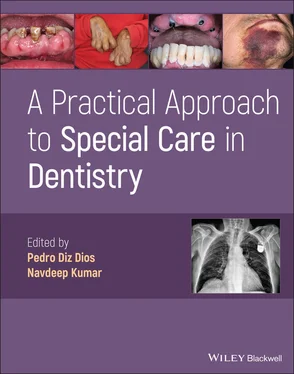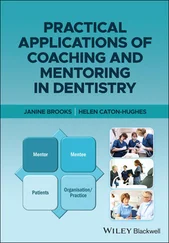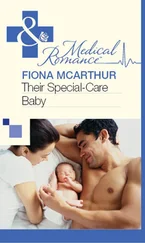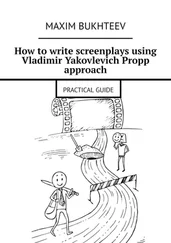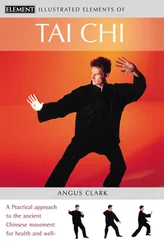A Practical Approach to Special Care in Dentistry
Здесь есть возможность читать онлайн «A Practical Approach to Special Care in Dentistry» — ознакомительный отрывок электронной книги совершенно бесплатно, а после прочтения отрывка купить полную версию. В некоторых случаях можно слушать аудио, скачать через торрент в формате fb2 и присутствует краткое содержание. Жанр: unrecognised, на английском языке. Описание произведения, (предисловие) а так же отзывы посетителей доступны на портале библиотеки ЛибКат.
- Название:A Practical Approach to Special Care in Dentistry
- Автор:
- Жанр:
- Год:неизвестен
- ISBN:нет данных
- Рейтинг книги:3 / 5. Голосов: 1
-
Избранное:Добавить в избранное
- Отзывы:
-
Ваша оценка:
- 60
- 1
- 2
- 3
- 4
- 5
A Practical Approach to Special Care in Dentistry: краткое содержание, описание и аннотация
Предлагаем к чтению аннотацию, описание, краткое содержание или предисловие (зависит от того, что написал сам автор книги «A Practical Approach to Special Care in Dentistry»). Если вы не нашли необходимую информацию о книге — напишите в комментариях, мы постараемся отыскать её.
Learn to treat dental patients with disabilities or who are medically compromised A Practical Approach to Special Care in Dentistry
A Practical Approach to Special Care in Dentistry
A Practical Approach to Special Care in Dentistry — читать онлайн ознакомительный отрывок
Ниже представлен текст книги, разбитый по страницам. Система сохранения места последней прочитанной страницы, позволяет с удобством читать онлайн бесплатно книгу «A Practical Approach to Special Care in Dentistry», без необходимости каждый раз заново искать на чём Вы остановились. Поставьте закладку, и сможете в любой момент перейти на страницу, на которой закончили чтение.
Интервал:
Закладка:
Medications
Haloperidol
Levomepromazine
Biperiden
Dental History
Dental treatment under general anaesthesia 10 years earlier
No previous dental treatment provided with local anaesthesia
Patient brushes his teeth himself 3 times a day (supervised/assisted by his mother twice daily, namely morning and at night)
Still uses the same brand of children's toothpaste as he finds adult toothpastes too strong in taste
Social History
Lives with his parents
His mother is highly involved in taking care of him
During the day, the patient attends a specialised centre and participates in craft workshops
Non‐verbal – uses pictograms for communication
Avoids eye contact
Does not like loud sounds or vibrations
Only eats ‘white food’, predominantly bread, rice, white fish, milk – sugar added to all food as he finds the taste of salt and spices unpleasant
Oral Examination
Co‐operation facilitated with the use of pictograms ( Figure 2.2.1)
Good oral hygiene
Fracture of the incisal edge of the crown of #11 and cusp fractures in #14, #24, #26, #27 and #44 ( Figure 2.2.2)
Coronary fracture due to extensive, deep and non‐restorable caries in #47; tender on palpation
Restorable caries: #17, #18, #35 and #45
Missing teeth: #16
Radiological Examination
Orthopantomogram successfully undertaken
In addition to the clinical findings, recurrent caries through noted in #37 and #38 and deep caries with likely pulpal involvement in #47
Structured Learning
1 What factors may have contributed to the high caries rate?Lack of access to regular dental careHigh sugar content of foodStill using a children's toothpaste – fluoride content not optimal for an adultOral dryness secondary to medication (levomepromazine and biperiden)
2 What could be the cause of the incisal/coronal dental fractures in this patient?BruxismSelf‐harmPica (e.g. lithophagy/ingesting stones) Figure 2.2.1 Oral examination was carried out with the help of pictograms. Figure 2.2.2 (a) Fracture of the incisal edge of the crown of tooth #11. (b) Multiple cusp fractures.
3 What factors are considered important in assessing the risk of managing this patient?SocialCommunication challenges (non‐verbal and verbal)Limited co‐operation which can be worsened by unfamiliar environments or loud noisesSelf‐harmMedicalAortic stricture corrected should not impact on delivery of dental treatmentVomiting/nausea as a potential side‐effect of biperidenDizziness, lightheadedness, headache as a side‐effect of haloperidolDentalUrgent dental treatment required for #47Local stimuli (e.g. rotary instrumentation noise) and stress can negatively impact behaviourPain tolerance unknownTooth surface loss/bruxismIncreased likelihood of further/recurrent caries due to the highly cariogenic diet and suboptimal fluoride levels in the toothpaste
4 Following a course of antibiotics to manage the acute infection associated with #47, the patient returns for extraction of this tooth. What would you consider?Although this patient has no previous experience with local anaesthesia, it may be possible to attempt more urgent procedures (e.g. extraction of #47) in the dental clinic; acclimatisation visits should be arranged, with appropriate adjustments in place (minimise loud noises, use pictograms)Given the considerable dental treatment needs and depending on the patient's ability to co‐operate with treatment under local anaesthesia, this may be followed by comprehensive dental treatment under general anaesthesia session in a hospital setting where available – this will avoid the repeated trigger of vibration/noise from the dental drillSuccessive follow‐up/treatment sessions should be attempted in the dental clinic to ensure regular dental reviews are in place
5 What should you consider when arranging dental visits for assessment and acclimatisation?It may be helpful to create a story book with pictograms to anticipate what's going to happenKeep the appointments in the same time slot/day of the week, ensuring that they do not interfere with the specialised centre visits or important activities for the patient (e.g. going to the swimming pool)Always implement the same study routine (e.g. meeting place, progressive exposure to the setting and instrumentation)Do not change dental treatment rooms or dental chairsAlways recruit the professional team (both dentist and support staff)Do not change attire (e.g. work uniform colour)
6 If the patient needs to be sedated, what technique would you use?Patients with autism often do not tolerate the nasal facemask for applying nitrous oxide/may not accept physical contact on parts of their face (although this can be trained in some cases)Due to the risk of synergy with the antipsychotic drugs the patient is taking, a medical consultation opinion should be accessed if sedatives (e.g. benzodiazepines) are being consideredParadoxical reactions to drug sedation are common
7 After completing the extraction, you note that there is extensive purulent discharge from the socket and prescribe an analgesic and an antibiotic. Which should you avoid?Any nonsteroidal anti‐inflammatory analgesic may be prescribedDo not administer opioid analgesics (e.g. codeine or tramadol) due to potential interactions with the antipsychotic drugsAvoid azithromycin because of the interaction with levomepromazine (risk of QT interval prolongation)
General Dental Considerations
Oral Findings
Prevalence of caries and periodontal disease similar to the general population
Bruxism more common
Traumatic lesions often observed
Dry mouth and occasionally hypersalivation of pharmacological origin
Enamel erosion due to gastroesophageal reflux disease is not uncommon
Dental Management
Poor communication and interpersonal skills may be misinterpreted as disruptive behaviour
Pharmacological adjuncts may be required, with some patients requiring general anaesthesia to deliver dental treatment safely
An individualised approach is required to enable delivery of dental care ( Table 2.2.1; Figures 2.2.3and 2.2.4) Table 2.2.1 Considerations for dental management.Risk assessmentVariable behaviour/presentation (requires an individualised approach)Stereotypy/uncontrolled movementsRepetitive routines/activitiesSelf‐aggression, particularly when distressedIntolerance for physical contact, noise, vibration, bright lights, strong taste/smellsHigh sensitivity to pain (may not respond when testing for pain/pulp vitality)Criteria for referralMany patients can be treated in a conventional dental clinic, although they generally need several prior desensitisation sessionsReferral to a specialised clinic or hospital centre is indicated mainly by the degree of co‐operation and hence pharmacological adjuncts required, and/or the extent of the treatment needsAccess/positionThe presence of a family member/carer is desirable to give the patient reassurance and to also give guidance to the dentistArrange acclimatisation visits, ensuring that a predictable routine is followed with the same dental clinic and dentistMinimise waiting timeShort sessionsCommunicationIn many cases, both verbal and non‐verbal communication is impairedKeep language and sentences simple – avoid metaphors, humour may be misunderstoodAllow extra time to process informationDesensitisation in school or at home with visual and manual support may be helpfulUse of pictogramsSimulation of proceduresRepetition of ordersTell–show–do and immediate positive/negative reinforcement techniques can be useful Consent/capacityCapacity assessment is required as some patients can make informed decisions (e.g. Asperger syndrome)If capacity is confirmed as being impaired, a best interest decision is required, involving the patient's parents or guardiansThe consent process/best interest discussion should include the possibility of unexpected reactions to certain stimuli (e.g. pain and noise)Anaesthesia/sedationLocal anaesthesiaPain tolerance may be present and local anaesthesia may be avoided in some procedures (e.g. some filings)Acclimatisation with the same process being repeated may be effectiveIf local anaesthesia cannot be given safely, alternative approaches should be consideredSedationThe effectiveness of conscious sedation is unpredictable (paradoxical effect may occur)Inhalational sedation with nitrous oxide and oxygen may not be accepted due to use of the nasal hood/contact with the faceGeneral anaesthesiaMay be required for patients needing complex dental treatment and those where sedation is not effectiveA single side room rather than a bed on an open ward is preferableA day‐stay modality is desirableDental treatmentBeforeIndividualised risk assessment required to identify potential triggers that can cause distressConsider the possibility of pain insensitivityDuringIn the event of intolerance to the noise of the rotary instrumentation, chemical–mechanical caries removal techniques may be employed – headphones may also helpThe dental chair light may also not be tolerated – dark patient glasses may help; alternatively, consider fibreoptic handpieces and/or smaller light sourcesTerminate the appointment if the patient demonstrates signs of anxiety/stress as this can quickly escalate to challenging behaviourAfterArrange another appointment, ideally at the same time, with the same dentist and in the same dental officeDrug prescriptionPatients taking selective serotonin reuptake inhibitors (SSRIs) may not experience adequate pain relief from codeine or its derivatives (SSRIs inhibit several families of hepatic enzymes, which may delay the biotransformation to the active metabolite of codeine)Education/preventionInvolve the relatives and caregivers where requiredUse pictogramsConsider that some patients cannot tolerate electric toothbrushes due to the noise and vibrationConsider the use of flavour‐free/mild‐flavoured toothpastes and mouthwashes; non‐foaming toothpastes may also be better acceptedDietary counselling Figure 2.2.3 Desensitisation with visual support may be helpful. Figure 2.2.4 A visual timer may improve co‐operation.
Читать дальшеИнтервал:
Закладка:
Похожие книги на «A Practical Approach to Special Care in Dentistry»
Представляем Вашему вниманию похожие книги на «A Practical Approach to Special Care in Dentistry» списком для выбора. Мы отобрали схожую по названию и смыслу литературу в надежде предоставить читателям больше вариантов отыскать новые, интересные, ещё непрочитанные произведения.
Обсуждение, отзывы о книге «A Practical Approach to Special Care in Dentistry» и просто собственные мнения читателей. Оставьте ваши комментарии, напишите, что Вы думаете о произведении, его смысле или главных героях. Укажите что конкретно понравилось, а что нет, и почему Вы так считаете.
